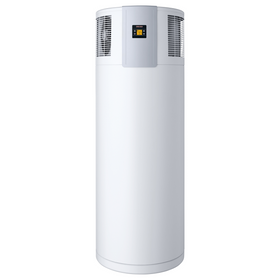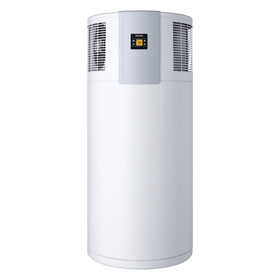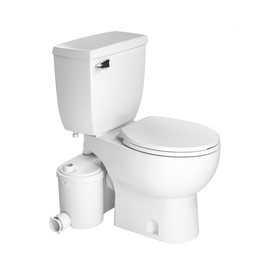
How to Make a House Quieter
Last Updated: Mar 29, 2025In the world of sustainable home building, rarely do we think about noise pollution. Homeowners, architects, and construction teams go to great lengths to reduce construction waste and incorporate recycled materials into the building or remodeling process. Through solar panels, wind turbines, household hydropower, and other renewable, clean energy sources, we conscientiously attempt to reduce the carbon emissions associated with the energy that we use in our homes. Many homeowners are turning to energy auditors or advisors and are even working toward net-zero retrofits to find ways to improve their home's energy efficiency.
These sustainable home strategies are undoubtedly impactful both for the environment and the comfort of the homes we live in. However, a family living in an exemplar energy-efficient and healthy home located next to a busy airport might find that the noise pollution invading their home detracts from their house's sustainability benefits. Fortunately, several sustainable acoustic solutions can help to soundproof your home from unwanted noise pollution effectively.
Table of Contents
- Who Suffers From Noise Pollution?
- What Are The Harmful Effects of Noise Pollution?
- What Are Some Sustainable Noise Reduction Strategies?

Who Suffers From Noise Pollution?
We often associate noise pollutions with cities, and rightfully so. The concentration of large populations in a small area will bring some sustainability benefits, such as reduced transportation or commuting requirements. Still, cities also come with a substantial amount of noise. By the year 2100, an estimated 84 percent of humanity will have taken up residences in cities, meaning that noise pollution will be an issue that most people will have to endure.
The intensity of noise pollution in urban settings also reflects social inequalities. According to one study published in the Environmental Health Perspectives journals, neighborhoods and communities that suffered from higher poverty rates and larger proportions of black, Hispanic, and Asian residents tended to suffer from higher noise levels than other areas. Even in smaller towns, low-income residents are much more likely to live near airports, train tracks, bus stations, power plants, factories, and other infrastructure that generate large amounts of noise pollution.

What Are The Harmful Effects of Noise Pollution?
While noise pollution can certainly interrupt what was otherwise a peaceful night's sleep, there are several other damaging health effects of people who suffer from noise pollution.
The Lancet reported on multiple studies that have shown that noise exposure leads to many negative outcomes. They say that adverse effects include disturbed sleep, annoyance, daytime sleepiness, patient outcomes, employee performance in hospitals, increased hypertension and cardiovascular disease, and impaired cognitive performance in children.
Being continuously exposed to repeated high noise levels has also been linked to hypertension, increased stress levels, worsened immune systems, hearing loss, and could exacerbate several other medical conditions. A notable environmental health researcher notes that "the brain can adapt to this (urban) noise…but even if you are not conscious of the noise, this is still stimulating your organic system." Several decades ago, the EPA had a noise control program. While that program is no longer active, they determined that acceptable indoor noise levels were below 45 decibels. However, more recent research has found that indoor noise levels around 30 decibels can disturb sleep, and adverse cardiovascular effects can begin at repeated exposure to sounds around 65 decibels.
While several of the larger metropolitan areas are pushing sustainability agendas that focus on more livable and quieter urban design, homeowners who live in areas affected by noise pollution would do well to incorporate soundproofing strategies into their homes.
What Are Some Sustainable Noise Reduction Strategies?
Unfortunately, traditional soundproofing strategies for homes have often created more health and sustainability problems than they solved. Foam products used for soundproof walls and ceilings are usually manufactured from toxic and non-biodegradable materials sourced from the petrochemical industry. These less than ideal acoustic "solutions" also present a fire hazard for homes.
For the sustainable-minded homeowner who wants to protect their interior environment from noise pollutions, today, there are several high-performance acoustic solutions on the market made from more sustainable materials.

Green Glue
Green Glue is a non-toxic, low-VOC, visco-elastic compound that you can quickly and easily apply to both new home construction and remodels or retrofits. This unique noise-damping product is one of the most cost-effective soundproofing materials available to homeowners, and its application is fast, simple, and effective. The compound in Green Glue can dissipate structural vibrations caused by sound waves that travel through ceilings, walls, and floors. This product is most often applied between two drywall sheets, plywood, or any commonly used building for walls and ceilings. It can dramatically reduce noise transfer from one room to another. With a cost of about $1 per square foot, it is also one of the most economical strategies for soundproofing areas of your home.

Eco-Flex Wall Panel
For homes near interstates, airports, or other noisy, urban infrastructure, creating a physical barrier is an important noise reduction strategy. While houses with large amounts of thermal mass can provide a natural sound barrier, this strategy is not necessarily a feasible renovation strategy.
Eco-Flex is a company that makes unique and visually attractive exterior wall panels that can be installed as a type of fencing around urban properties. These wall panels are made from 100% recycled rubber and can help to reduce traffic noise and other sources of urban noise pollution. These rubber panels are easy to install with tongue and groove joints and can be relocated and removed as needed.

Quiet Batt™ 30 Soundproofing Insulation
Homes need to be insulated for improved thermal performance and energy efficiency. Opting for an insulation option that also offers optimal soundproofing qualities is a good choice for homeowners who want to reduce noise pollution. Quiet Batt 30 Soundproofing Insulation is a 3-inch premium, high-performance soundproofing and thermal insulation product. It can be used in both interior and exterior walls, ceilings, and attic applications and installed between standard wood and metal studs. For homes that already have insulation, this product can be combined with existing insulation products. The Quiet Batt™30 is made from 80% recycled cotton in terms of sustainability, is non-toxic, itch-free, and has a Class A flammability rating.

Echo Absorber™ Acoustic Cotton
Like the Quiet Batt™ insulation, Echo Absorber cotton panels are made with 80% recycled cotton. They are also entirely free of volatile organic compounds (VOCs), fiberglass, and formaldehyde, making for a healthy interior soundproofing strategy. The panels are very flexible, allowing for simple installation in a wide array of homes. This acoustic, recycled cotton product is also mold and flame-resistant, and lightweight.
Triple Pane Windows
Windows and doors also have a dramatic effect on the level of noise inside your home. Triple-pane windows are typically touted for the extra insulation benefit and low U-values. Fortuitously, the added layer of glass and thicker overall window profile also makes a noticeable difference in the noise level that can penetrate inside the home.
Tobias Roberts
Tobias runs an agroecology farm and a natural building collective in the mountains of El Salvador. He specializes in earthen construction methods and uses permaculture design methods to integrate structures into the sustainability of the landscape.













